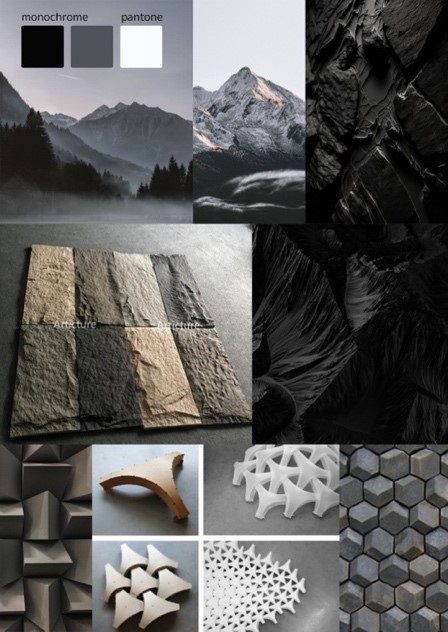Study of Charcoal Properties for Home Decoration Product Design
Keywords:
Wood Charcoal, Home Decoration, Design, Material PropertiesAbstract
Background and Objectives: The charcoal-producing community is currently facing a decline in income due to a decrease in the demand for charcoal, both domestically and internationally. Such a decline stems from other technological advancements and innovations, such as gas stoves and electric skillets, which have replaced the use of traditional charcoal. Consequently, charcoal artisans, middlemen, and exporters have been forced to close their businesses. However, upon examining the properties of charcoal, it is found that charcoal possesses unique characteristics and offers numerous benefits. It can be utilized effectively in various sectors, including agriculture, livestock, construction, and daily life. Maximizing the use of charcoal could significantly improve both the quality of life and environmental conditions. Therefore, the objective of this research is to study the properties of charcoal and explore avenues for enhancing its value as a material for home decor design. Methodology: An experimental design, with the sample consisting of three types of charcoal materials, namely, rubberwood charcoal, bamboo charcoal, and mangrove charcoal, was adopted. The study focused on examining the characteristics of the charcoal samples via visual observation and elemental analysis. The properties of the charcoal samples were evaluated in terms of density, flexural strength, modulus of elasticity, compressive strength (perpendicular to the grain), compressive strength (parallel to the grain), thickness swelling percentage, thermal resistance, and increased moisture content. Additionally, potential value-adding approaches for charcoal and market trends through expert interviews was determined. The results were subsequently applied to the design process. Main Results: The various types of charcoal exhibit similar visual and elemental characteristics; however, mangrove charcoal stands out with its distinct and natural grain patterns, making it particularly suitable for design purposes. The charcoal with the highest density is mangrove charcoal (661.85 kg/m³), while rubberwood charcoal exhibits the lowest swelling percentage (0.46%). Mangrove charcoal also exhibits the highest thermal resistance (0.3652 m²·K/W) and the lowest increase in moisture content (1.02%). Based on design expert interviews, it is suggested that the unique characteristics of charcoal should be emphasized, with its inherent properties serving as supplementary features. Charcoal should not be over-processed to the point where its intrinsic value is diminished. Regarding the concept of designing home decor from charcoal, inspiration should be drawn from nature, showcasing the material’s authenticity. In terms of market targeting, the focus should be on the GEN Meridian group, which appreciates aesthetics and has purchasing power in the medium to high-end market. The production process should adhere to a combination of craftsmanship and artisanal industry, as the home decor market emphasizes aesthetics. such as grain patterns and textures, of the wood prior to carbonization, with mangrove charcoal being particularly notable for its distinctive natural grain. All three types of charcoal exhibit similar properties in terms of density, swelling, thermal resistance, and moisture resistance. However, there are certain differences in specific properties, such as flexural strength and compressive strength, which may need to be improved using binding materials or production techniques. The test results indicate that mangrove charcoal outperforms rubberwood charcoal, while bamboo charcoal could not undergo testing due to its nonstandard size. Practical Application: On the design side, the design should be focused on using the physical characteristics of charcoal, such as natural blacks and textured patterns, rather than its technical properties, especially in home decoration that emphasizes beauty, as in the production of vases, lamps, and decorative tiles. Marketing should focus on high-income and well-tasted target groups, which are those with purchasing power in the middle to high markets. The design of home furnishings from wood and charcoal should be in the handicraft and industrial handicraft systems. Emphasis should be on beauty and aesthetics, which require the skill of craftsmen to create pieces with spirit.
References
National Science and Technology Development Agency (N.P.), 2023, New Agricultural Technology Magazine, 4 (39), November 2003, pp. 62-65. (In Thai)
Chutavipak, W., 2005, The Art of Interior Design, 4th ed., Bangkok, Witthayapat. (In Thai)
Department of International Trade Promotion, Ministry of Commerce, 2021, Report on the Export of Gifts, Souvenirs, and Home Décor for February 2021 [Online], Available: https://www.ditp.go.th. [1 March 2023] (In Thai)
ASTM Standard C39, 2012, “ASTM C 39: Standard Test Method for Compressive Strength of Cylindrical Concrete Specimens,” ASTM International, West Conshohocken, Philadelphia.
Phatchariya, T., 2022, “Creating Products from Local Materials in the Songkhla Lake Basin,” Art Pritas Journal, 10 (2), pp. 23-33. (In Thai)

Downloads
Published
How to Cite
Issue
Section
License
Copyright (c) 2024 King Mongkut's University of Technology Thonburi

This work is licensed under a Creative Commons Attribution-NonCommercial-NoDerivatives 4.0 International License.
Any form of contents contained in an article published in Science and Engineering Connect, including text, equations, formula, tables, figures and other forms of illustrations are copyrights of King Mongkut's University of Technology Thonburi. Reproduction of these contents in any format for commercial purpose requires a prior written consent of the Editor of the Journal.




